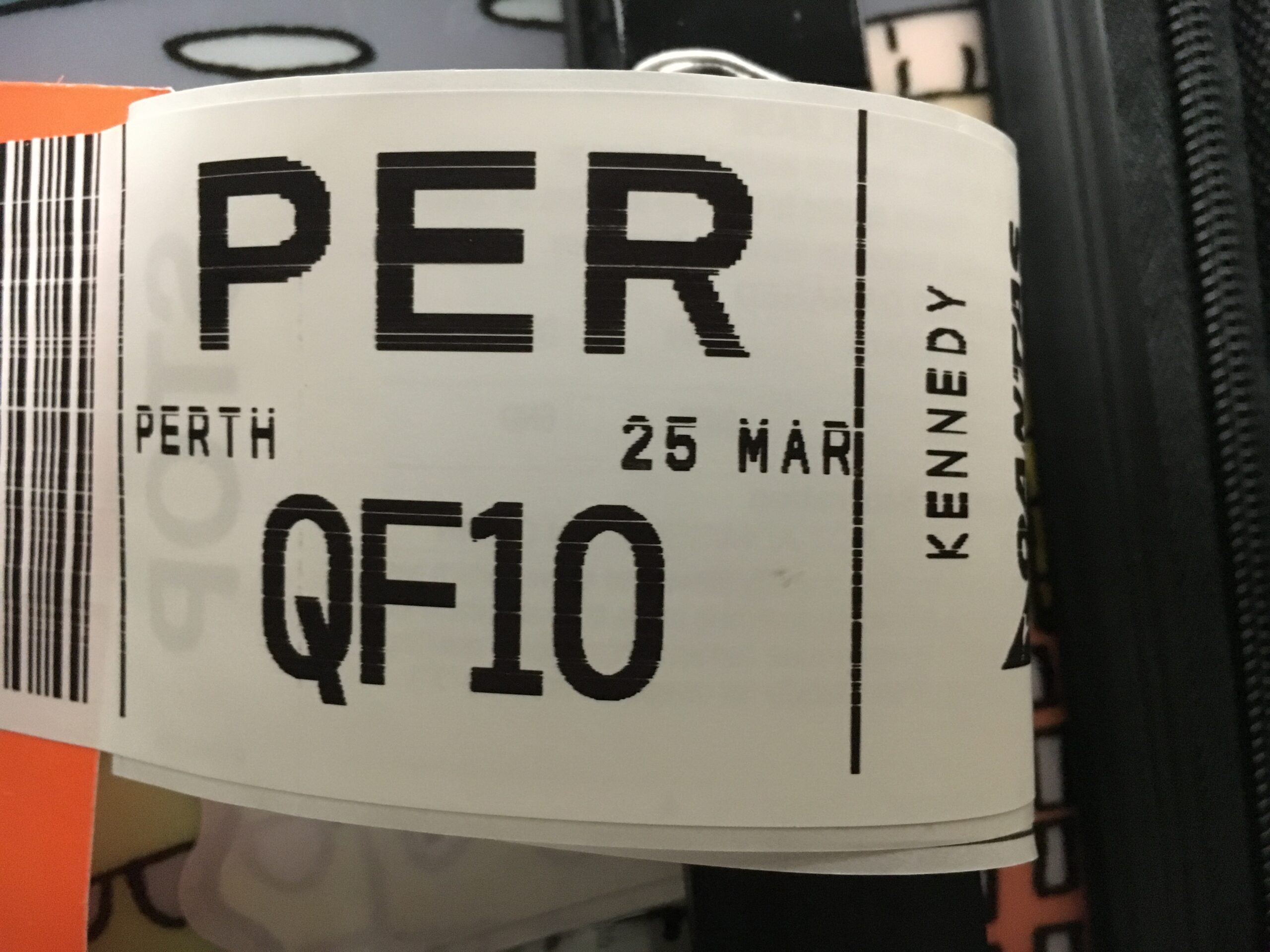Australia is incredibly far from the rest of the world. Sydney to Singapore is longer than London to New York, to Tokyo is ten hours, to Los Angeles, fifteen. As of the beginning of 2018, every inhabited continent (e.g., excluding Antarctica) had a link to every other inhabited continent, except for one pair, which was Australia to Europe.
That gap in the network of global mass transit closed when Qantas announced in 2017 they would use their new Boeing 787-9s to inaugurate daily nonstop flights from Perth to London. All kinds of new technologies were promised to fight jetlag: new lighting, menus and seats. This was big news for air travellers, and in a symbolic way, for all Australians. The Old World was coming closer. As a historian of Australiana and aviation, I had to be on the inaugural flight.
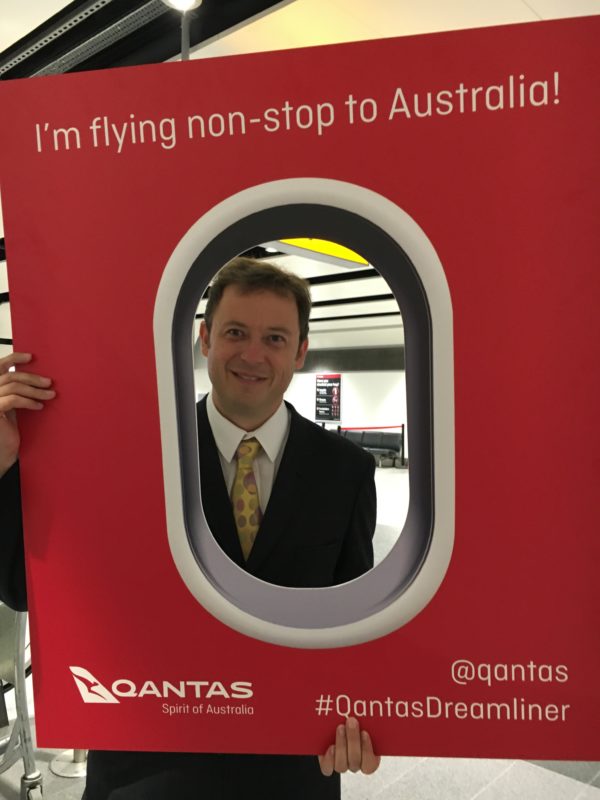
The last convict ship to Western Australia, the last colony to accept prisoners, sailed in 1868. Only 150 years later, on March 25, 2018, I was up early and breaking out the suit and tie in my Surrey suburb near Heathrow to make the journey nonstop in under 17 hours, while ten miles away the inaugural QF9 was unloading at the gate, having made the trip in 17 hours and three minutes, all in complete darkness.
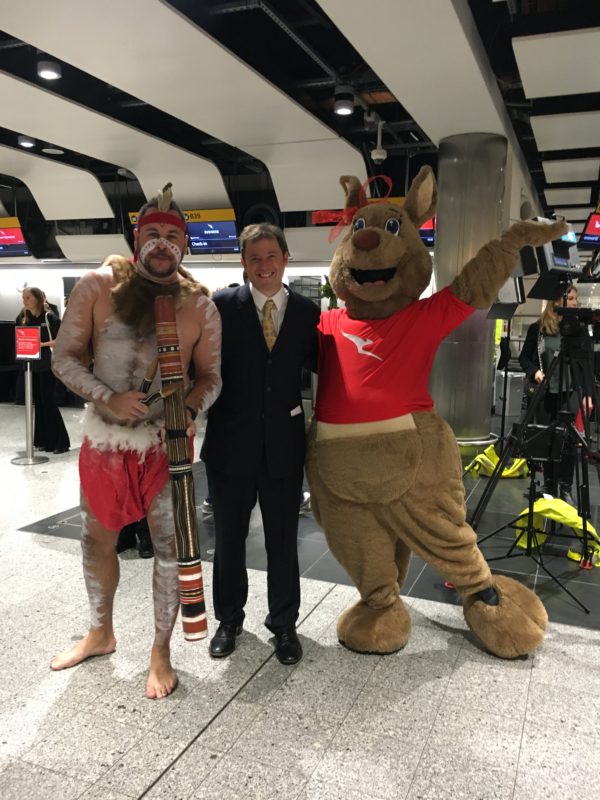
My flight to Australia was scheduled for 1315 off blocks, so I reached the terminal around 1000 to enjoy the atmosphere of transportation history in the making. Check in at Terminal 3 was unmissable, with the bright lights of TV news crews, the hubbub of excited ground staff and passengers, and a man in a large kangaroo outfit. After checking in and posing for pictures, I headed through security to the Qantas lounge, which, despite stiff competition from the likes of Cathay Pacific, American Airlines and hometown British Airways who all have their own lounges, is probably the best in the terminal. It has two levels, with an à la carte restaurant and bar on the main level and a gin bar and food buffet upstairs, with luxurious seating and appointments in a brightly lit, vibrant ambience. I met up with fellow enthusiast Noel Marsh-Giddings and enjoyed some great food and plenty of high quality Australian sparkling wines.
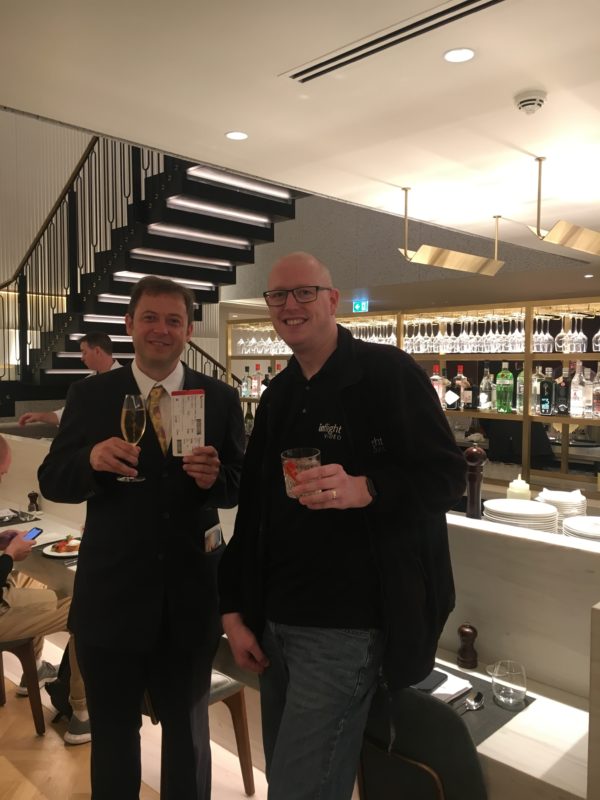
At the gate, bunting, fancy dress and Qantas cupcakes were on offer. During boarding, I was hauled out of line, put in a hi-vis vest and escorted onto the tarmac for a lightning-fast ramp tour to see our bird. Qantas have used Aboriginal art on their flagships previously, most famously on 747s Nalanji Dreaming and Wunala Dreaming, catching the eye in every port where they landed. Before me stood VH-ZND, the fourth 787 delivered to Qantas and named after Emily Kame Kngwarreye, the indigenous Australian artist honoured by the stunning special livery that beamed straight out of the timeless red dirt and saltbush of the heart of Terra Australis to wrap around the carbon fuselage of this futuristic jetliner.
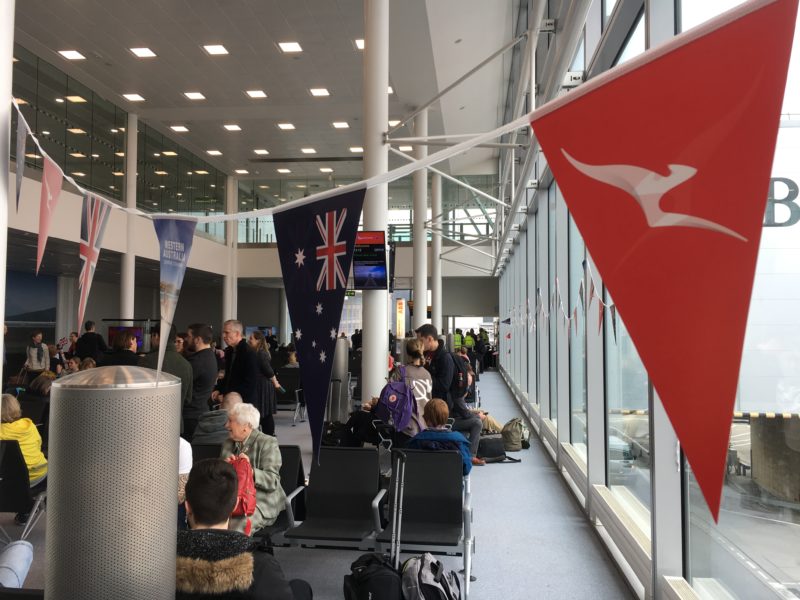
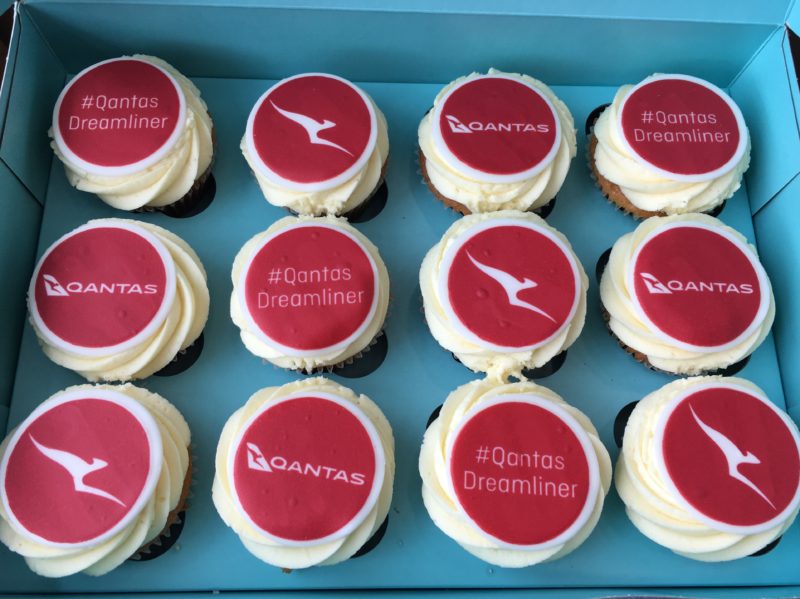
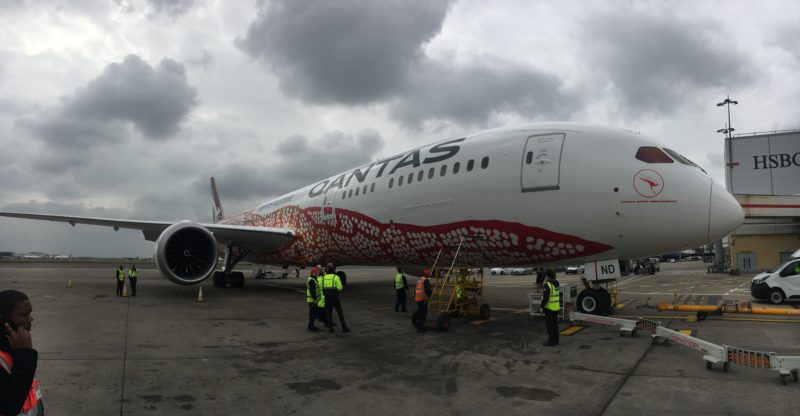
Wasn’t really sure how I (and Noel) were singled-out for a quick look on the ramp but when we reached Perth I presented the flight deck crew with a few of the books I have written about aviation and the captain already had one, so I was on someone’s radar. Back up the metal steps attached to the jetbridge and I ducked onboard the ship for the long voyage Down Under. The cabin crew were almost all Brits, as all Qantas departures from Heathrow are rostered out of the London crew base, but until today that meant only flying as far as Dubai, Singapore, Hong Kong or Bangkok then returning to Heathrow, so for the cabin crew, this was their first ever working flight to Australia. For a handful, it was going to be their first time visiting Australia ever. All Qantas flight deck crew are Aussie-based, and we had four on board, with each pilot scheduled to take two separate spells in the crew rest bunks en route.
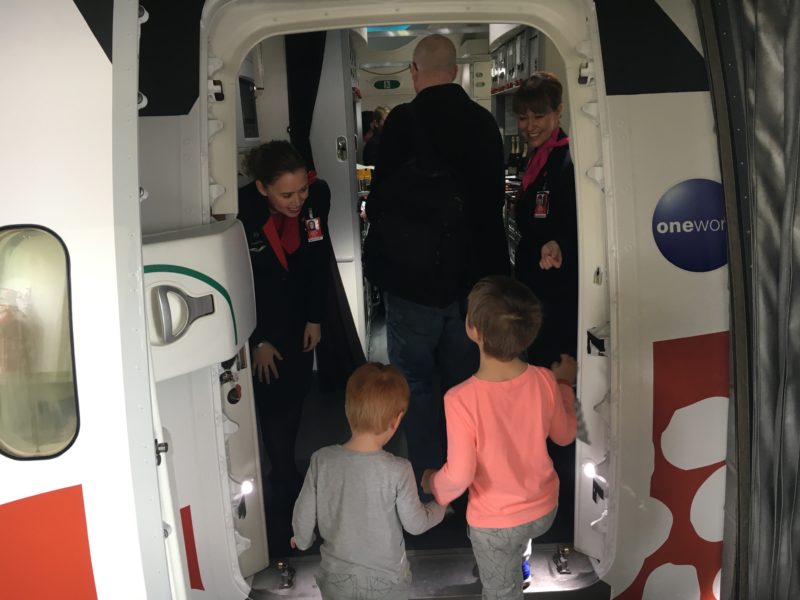
I took 59K, in the very back row, which I chose from the seatmap at the time of booking the first day the flight was on sale. In the weeks leading up to the trip, I told people where I would sit, and there was quite a bit of surprise that I had voluntarily chosen to be so close to noisy galley and toilets. So – not only do I not like the narrow seats on the 787 (and 10 abreast 777s) but regardless of width I also don’t like 3-3-3, especially because the window seat is that extra seat away from the aisle. (At least with the middle seat in a block of five in the old 2-5-2, you had two ways out.) Row 59 was the only one where the three seat units become pairs as the fuselage tapers towards the tail, which for me trumped every other consideration. Not only was I happy with the choice, but a wonderful thing happened. When the door of VH-ZND closed, there were two empty seats in the whole plane – and one of them was the aisle seat next to me. Hurrah!
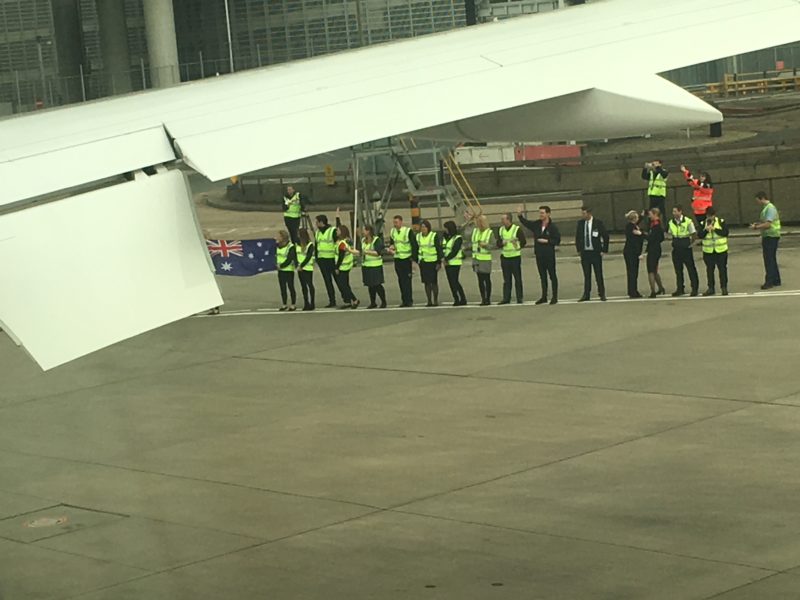
We taxied out, and after a safety briefing filmed at the many wonderful sights and surroundings of Australia, we were lining up for our historic departure. The takeoff roll felt looong and slooow, as we were near to max weight with the enormous amount of fuel needed to cover the 9,009 mile (14,499 kilometre) journey ahead.
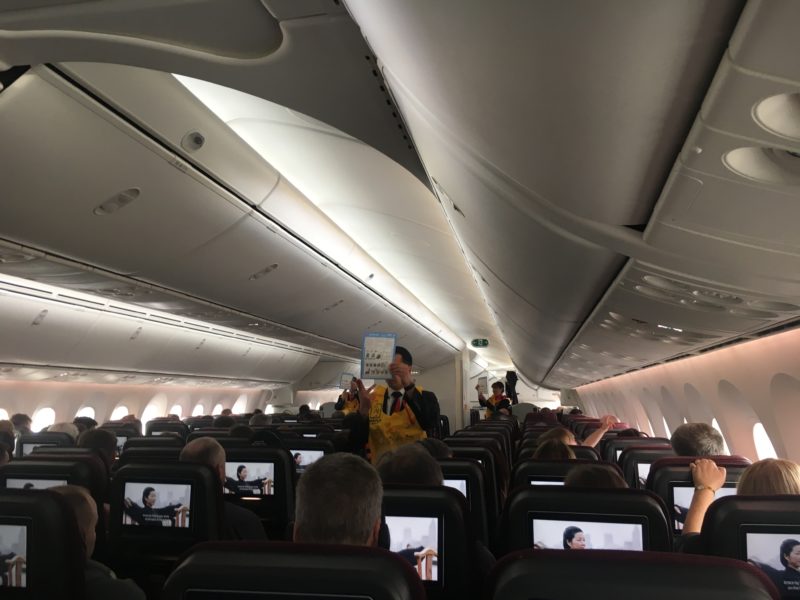
Although my suit – tailor-made in Pyongyang – was very comfortable, I had Cathay Pacific business class pyjamas packed in my hand luggage to change into as soon as possible after we were on our way, a favourite travel hack of mine, as the power of suggestion, even in an economy seat, is strong enough to send me off to sleep. Indeed I napped early from the effects of pre-departure excitement – and lashings of pre-departure champagne.
I awoke in time for the first of two meal services. For some years now, Qantas have dispensed with the traditional meal tray. The main dish is served in a rectangular foil dish, with a desert in a separate container, a bread roll plonked on top, and a sachet of cutlery, napkin and condiments alongside. It’s all the elements of a traditional airline meal, but no tray. I had assumed that it was to save weight, as a few hundred trays, even made of lightweight plastic, would add up over a year of flying by the entire fleet, but coincidentally I was in line at immigration at Perth with a Qantas executive who designed the service, so I leapt at the chance to find out what happened to the tray. Her explanation was fascinating, and showed the extent to which Qantas try to make flying as pleasant as possible.
“We realised that we could divide the passenger experience into two categories – ‘Me Time’ and ‘You Time’.” Me in this scenario is the passenger, and You is Qantas. Me Time is when the passenger gets to do what they want – read sleep watch movies etc. You Time when is the airline calls the shots – takeoff and landing, and meal service. Qantas realised that passengers don’t really enjoy You Time, because they have less control. By doing away with the meal tray, as soon as the passenger finishes eating, they can revert to whatever they were doing before, not hemmed in by the empty tray. More Me Time.
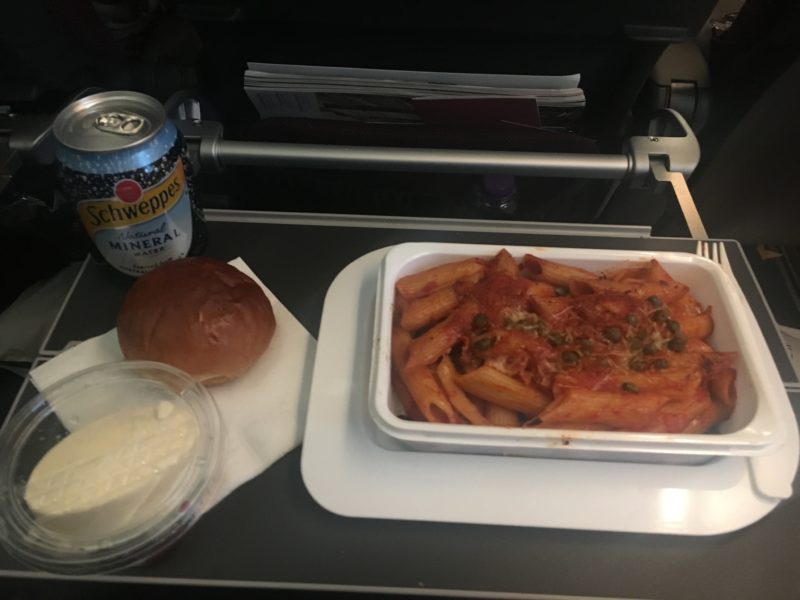
The food itself was filling and non toxic but the preflight hype had really ramped up my expectations, so I was pretty underwhelmed. No great taste sensation to rave about, and the mid-flight snacks were pedestrian. The hype talked about how the timing and ingredients would reduce jet lag, but really, a packet of breadsticks and hummus doesn’t seem that different to what you’d get on any other flight (and the jetlag, when I reached Sydney, took the best part of two traumatic weeks to recover from).
If Qantas divide flying into Me Time and You Time, QF10 could be said to break down into Dry (six hours to cover Germany, Austria, all of eastern Europe, enormous Turkey and even-bigger Iran) and Wet (from coasting out over the Persian Gulf overhead Dubai and across the enormous featureless expanse of the Indian Ocean, which took ten hours).
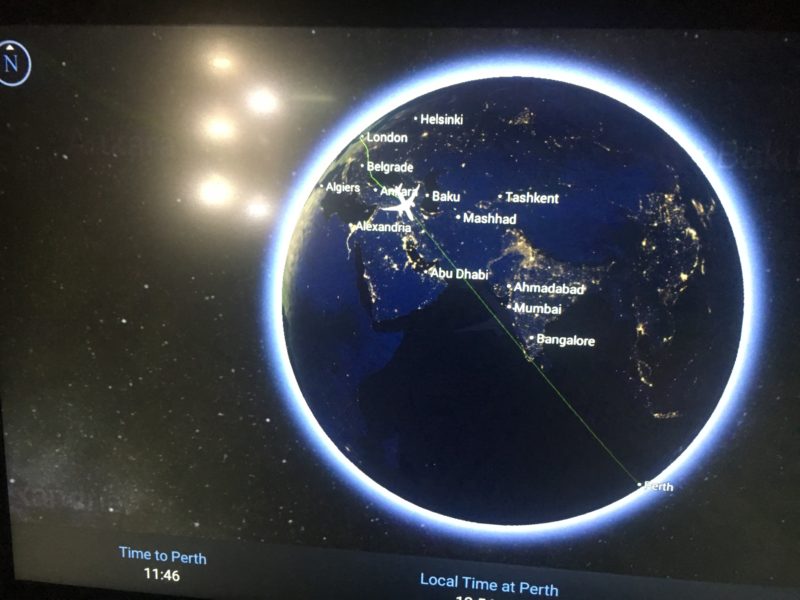
I managed some sleep, and found the seat to actually be very comfortable with a generous recline. It’s hard to make a final judgement with the neighbouring seat unoccupied, but maybe my apprehension about the width of nine-abreast 787s is unfounded. I actually avoid them in favour of 747s, 767s, nine abreast 777s (an endangered species), and Airbus, so maybe I should end my embargo and see how other airlines do it.
When I wasn’t sleeping or trying to sleep, I watched a few movies from a very wide, fresh and imaginatively-curated entertainment selection, including Australian Made, a rockumentary about the famous 1987 travelling music festival that featured Jimmy Barnes, I’m Talking, The Triffids, INXS and others, recently restored by Sony Classics. A nice reminder that Australia had a great 1980s – with great tunes too. Even with a lot of inventory, on some airlines you can spin through all the offerings and get to the end without anything snagging your attention, but there was plenty to get hooked into here.
Breakfast was served so late in the flight that I thought I must have missed it. (Singapore Airlines, on their eighteen-hour SQ22 over the pole to New York, served three complete hot meals, but the last one was cleared away at least two hours before landing, so you didn’t get off feeling too full and bloaty.) After so many hours in the seat, the idea of ever getting up out of it, let alone getting dressed back into my suit, seemed like science fiction. Maybe I could just spend the rest of my life sitting here, too weak to move, shuttling back and forth between Perth and London. Since that was probably unlikely to work, I had no choice but to summon superhuman strength and make myself presentable again.
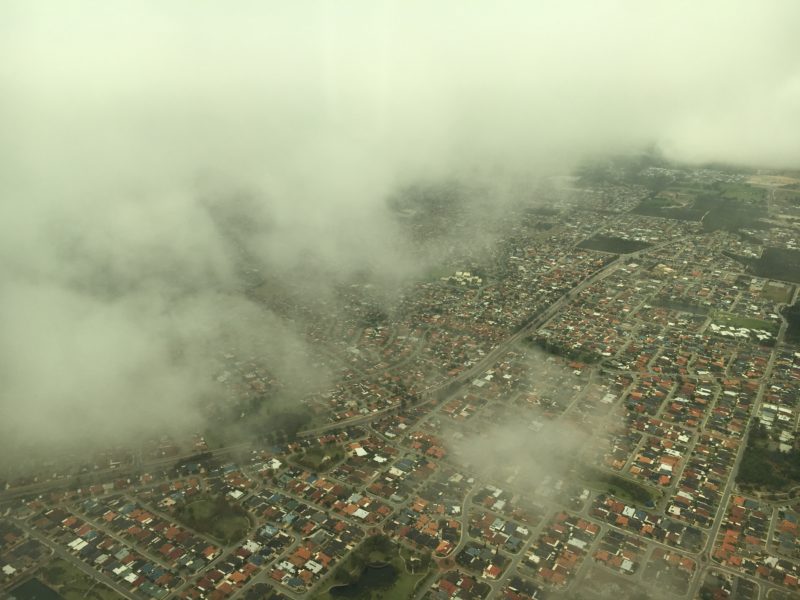
Some avgeeks seem to really hate passengers clapping on landing. Not only do I think a swell of appreciation as the engines rev up a throaty roar of reverse thrust outside is a lovely juxtaposition, but I am a master at actually getting a round of applause going. As we decelerated on runway 24, I put my hands together in gratitude, followed a few seconds later by the flight attendant seated next to me. When everyone onboard joined in, she smiled at her colleague across the aisle and said, “I got that started!” Of course you did.
I went to the flight deck to thank the pilots and got an impromptu and brief update on flight planning for such a long sector. I learned Qantas ran the flight as a simulation every day for a whole year leading up to the first trip, using real-time weather. In addition, for the first month on the westbound leg (which faced into the prevailing winds, thus slowing its progress), they were blocking twenty seats, to ensure the flight made it without having to drop in somewhere en route for fuel (known as a “splash-n-dash”), as the bad publicity would hurt the commercial prospects of the route. With a bit more real world experience, and the flight out of the spotlight, loads could be gradually fine-tuned and increased.
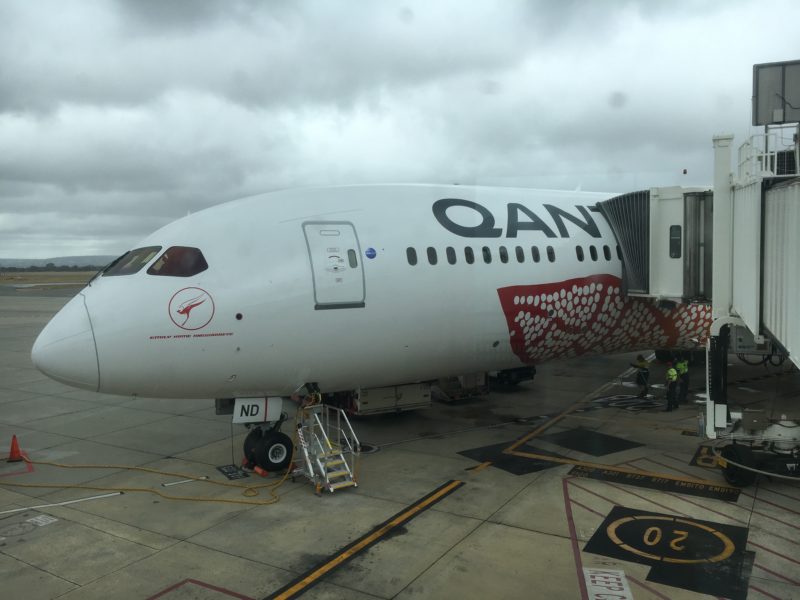
After I left the aircraft, cleared immigration and picked up my bag, I found myself outside. The products on billboards, the area codes painted on the side of taxis, the different species of plants in the manicured roadside, the unique quality of light. It can only be Australia, thrillingly familiar to me as the country of my birth, until now incredibly far from my adopted home country of England, yet here I was.
OK it’s only Perth, still a continent away from my city of Sydney, and the rest of the vast majority of Australians – the nation is home to over 24 million people, with only 2.5 million residing in WA (which btw is as big as the EU). But for Australia, where “the tyranny of distance” is a universally-known phrase reflected in virtually every aspect of life, the symbolic importance of this link to the old country is hard to exaggerate.
And I have to say, despite my reluctance to get off the plane, I felt totally OK. The increased cabin pressure, resultant higher humidity levels had paid off. Now the route is fully established and Qantas are reporting bumper loads in both directions, and better than expected performance from their 787s, even allowing room for cargo as well as a full load of passengers.
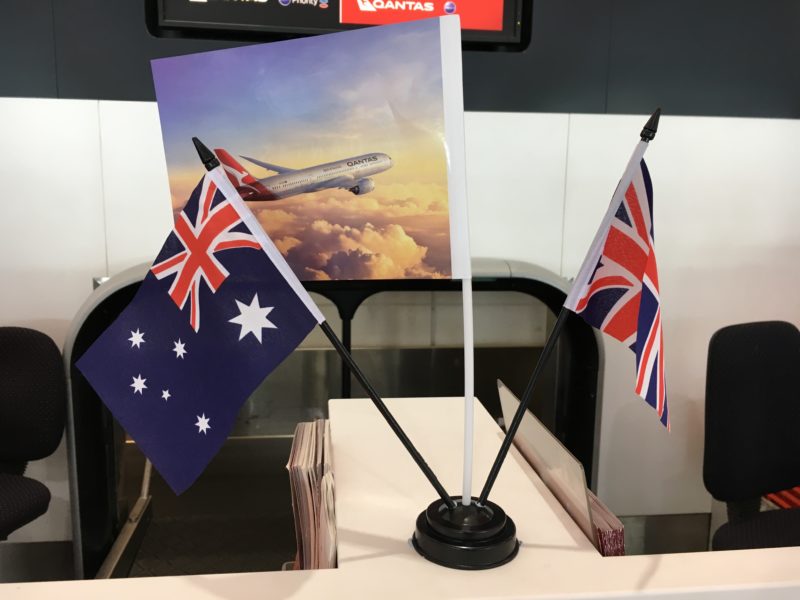
While the success of Perth to London is resulting in talk of more European nonstops to follow, the fact remains that demand for Qantas flights to Paris, Frankfurt, Berlin, Rome is still from the populated east coast, and Perth represents a significant detour for those traffic flows. London works from Perth because traffic to the United Kingdom from Australia is so great, and is in addition to a daily A380 from Sydney. To illustrate that point, remember that Qantas until recently had 747 service to Manchester, and in the 1970s even evaluated East Midlands for compatibility with 747 handling as a potential third UK gateway. France and Germany don’t have remotely the same role in the make up of Australian travel. If Paris or Berlin happen, it is reasonably likely they’ll happen from Sydney first.
Still, it’s nice to dream, and a crazy idea stemming from the range of the Dreamliner is how Australia finally got its nonstop link to Europe. The route is a success, and I loved my first flight. Who knows what the future holds.


